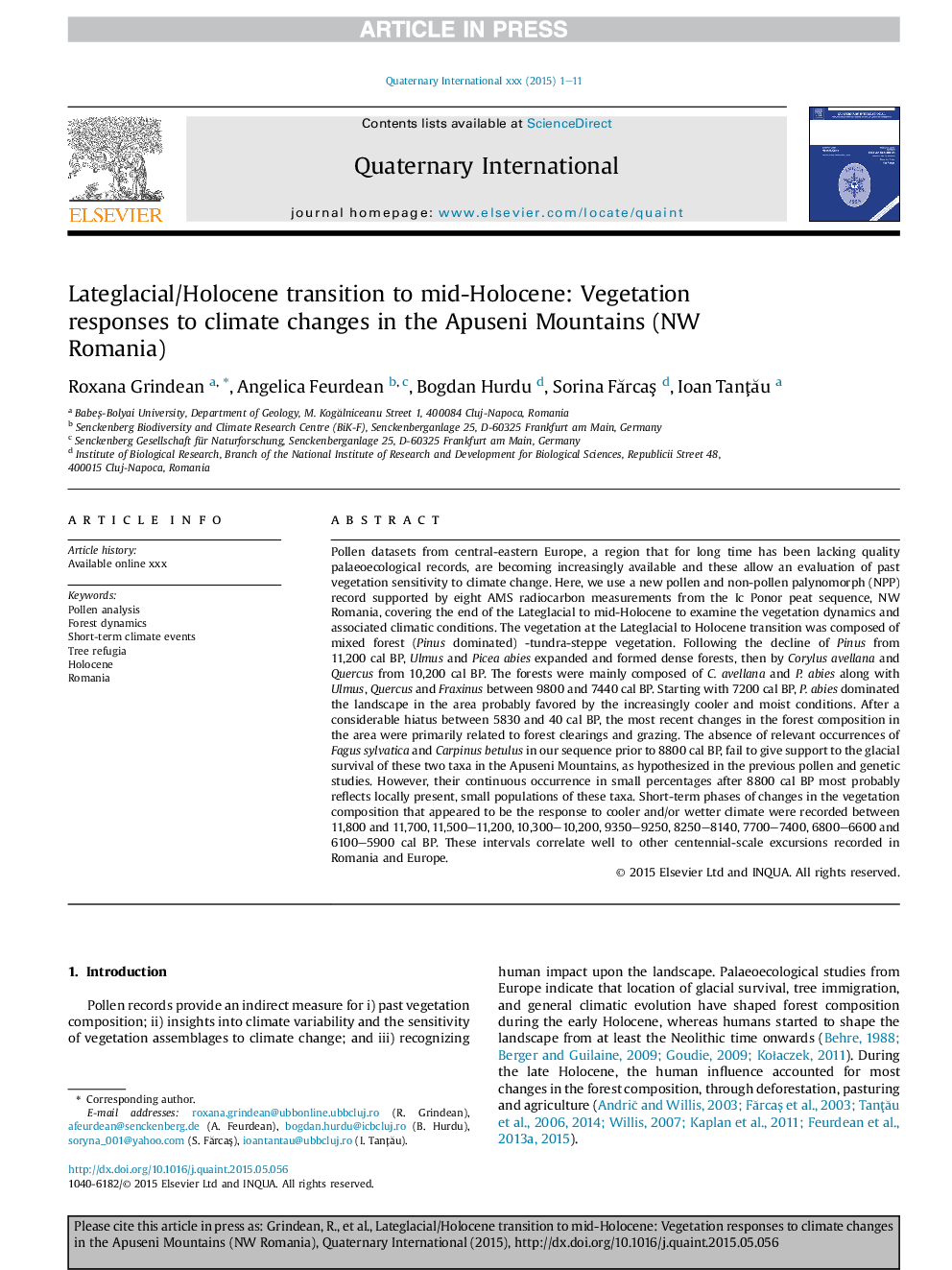| کد مقاله | کد نشریه | سال انتشار | مقاله انگلیسی | نسخه تمام متن |
|---|---|---|---|---|
| 7451405 | 1484110 | 2015 | 11 صفحه PDF | دانلود رایگان |
عنوان انگلیسی مقاله ISI
Lateglacial/Holocene transition to mid-Holocene: Vegetation responses to climate changes in the Apuseni Mountains (NW Romania)
دانلود مقاله + سفارش ترجمه
دانلود مقاله ISI انگلیسی
رایگان برای ایرانیان
کلمات کلیدی
موضوعات مرتبط
مهندسی و علوم پایه
علوم زمین و سیارات
زمین شناسی
پیش نمایش صفحه اول مقاله

چکیده انگلیسی
Pollen datasets from central-eastern Europe, a region that for long time has been lacking quality palaeoecological records, are becoming increasingly available and these allow an evaluation of past vegetation sensitivity to climate change. Here, we use a new pollen and non-pollen palynomorph (NPP) record supported by eight AMS radiocarbon measurements from the Ic Ponor peat sequence, NW Romania, covering the end of the Lateglacial to mid-Holocene to examine the vegetation dynamics and associated climatic conditions. The vegetation at the Lateglacial to Holocene transition was composed of mixed forest (Pinus dominated) -tundra-steppe vegetation. Following the decline of Pinus from 11,200 cal BP, Ulmus and Picea abies expanded and formed dense forests, then by Corylus avellana and Quercus from 10,200 cal BP. The forests were mainly composed of C. avellana and P. abies along with Ulmus, Quercus and Fraxinus between 9800 and 7440 cal BP. Starting with 7200 cal BP, P. abies dominated the landscape in the area probably favored by the increasingly cooler and moist conditions. After a considerable hiatus between 5830 and 40 cal BP, the most recent changes in the forest composition in the area were primarily related to forest clearings and grazing. The absence of relevant occurrences of Fagus sylvatica and Carpinus betulus in our sequence prior to 8800 cal BP, fail to give support to the glacial survival of these two taxa in the Apuseni Mountains, as hypothesized in the previous pollen and genetic studies. However, their continuous occurrence in small percentages after 8800 cal BP most probably reflects locally present, small populations of these taxa. Short-term phases of changes in the vegetation composition that appeared to be the response to cooler and/or wetter climate were recorded between 11,800 and 11,700, 11,500-11,200, 10,300-10,200, 9350-9250, 8250-8140, 7700-7400, 6800-6600 and 6100-5900 cal BP. These intervals correlate well to other centennial-scale excursions recorded in Romania and Europe.
ناشر
Database: Elsevier - ScienceDirect (ساینس دایرکت)
Journal: Quaternary International - Volume 388, 19 November 2015, Pages 76-86
Journal: Quaternary International - Volume 388, 19 November 2015, Pages 76-86
نویسندگان
Roxana Grindean, Angelica Feurdean, Bogdan Hurdu, Sorina FÄrcaÅ, Ioan TanÅ£Äu,